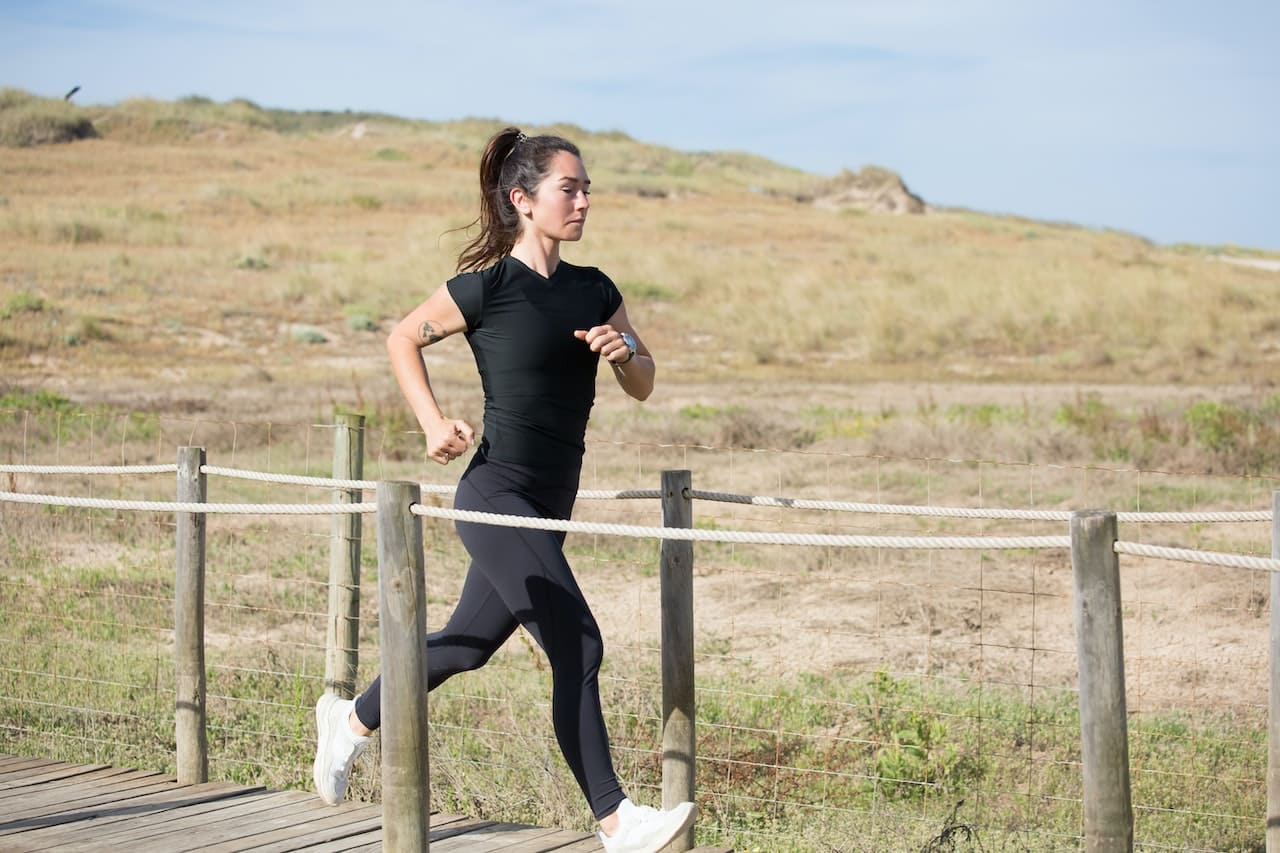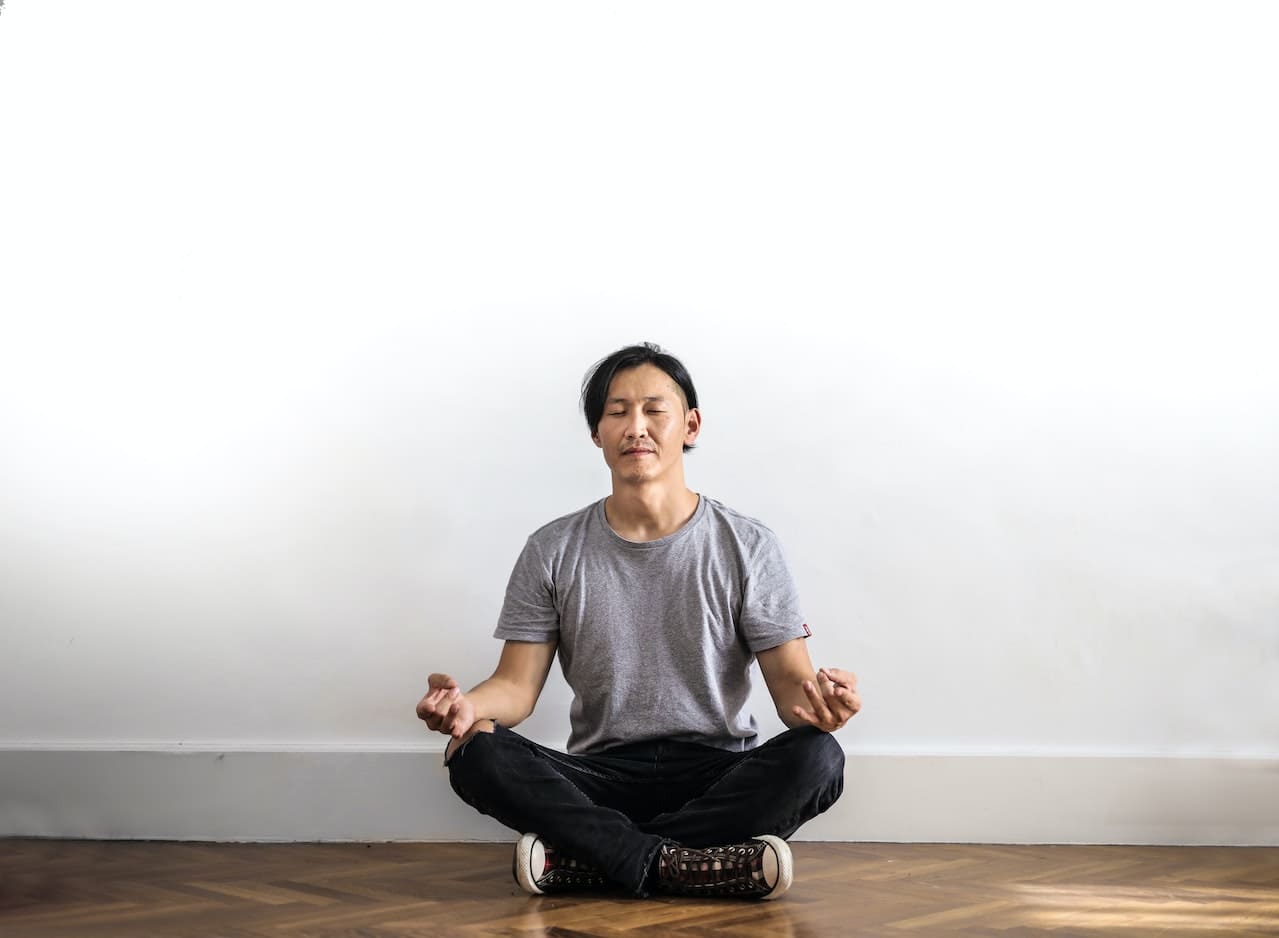Fitness and mental health: Best exercises for mind & body
Fitness and mental health are essential for improving your life's quality. By doing a regular exercise, you can reduce your level of stress & anxiety.

Source: Pexels
We're living in an age where 'holistic health' isn't just a fancy term anymore; it's a lifestyle we all are trying to embrace.
From dealing with the daily pressures of life to finding moments of peace in hectic schedules, managing our overall well-being requires harmony between the mind and body.
And guess what? The secret to achieving this balance could be something as simple as regular physical activity!
We're going to uncover how even the tiniest bit of exercise can light up various corners of our mental health, pushing the blues away, and inviting a stream of positivity.
Whether you're a fan of the treadmill, love peaceful yoga sessions, or prefer dancing around in your living room, there's something in here for you.
Ready to embark on a life-changing adventure towards a happier, healthier you? Let’s dive in and get to know more about the exercises for your mind and body!
The benefit of physical exercises on mental health
It's no secret that physical activity is good for the body, but its benefits for our mental health are just as significant, if not more so.
Think about the last time you went for a brisk walk or engaged in a sport you loved - remember that euphoric wave that washed over you afterward? That's your brain thanking you!
First off, let's talk about stress, a familiar intruder in our daily lives. When we're physically active, our bodies tend to relax. That tension we feel in our shoulders after hours at the desk? It fades away during a workout session.
Exercise is a fantastic stress-buster, not just because it gets our blood pumping, but because it promotes the production of endorphins, our brain's feel-good neurotransmitters. They act like natural painkillers, improving our ability to sleep, which in turn reduces stress.
But the perks don't stop there. Physical exercises are like a shield against anxiety and depression. No, it's not a cure, but it's a powerful tool. Moving our bodies helps us feel more energetic, ensuring that sadness and tiredness don't take the driver's seat.

Source: Pexels
Studies have shown that regular exercise can improve mood and even potentially prevent future depressive episodes. It's incredible to think that even moderate physical activity, like gardening or walking the dog, can usher in these benefits.
Let's not forget about self-esteem. Regular physical activity can positively influence self-perception and self-image.
When we exercise, we're not just building muscle or endurance; we're proving to ourselves that we're capable, boosting our confidence with every step, lift, or jump. Plus, achieving our fitness goals, however small, fosters a sense of accomplishment.
For those who find themselves in a constant battle with their thoughts, physical exercise can be a gateway to mental clarity. Ever heard of the term 'runner’s high'? It’s that feeling of mental ease and focus often experienced during long, continuous workouts. This clarity happens because exercising helps regulate the brain chemicals linked with mood, such as serotonin and dopamine.
Lastly, it's worth noting that you don't have to be a marathon runner to reap these benefits. The key is to find activities you love and make them part of your routine. Whether it’s biking, dancing, or team sports, what matters is consistent movement, ensuring these brain benefits keep rolling in.
In essence, physical exercise acts as a tonic for our minds, offering a dose of positivity, energy, and peace. Incorporating it into our daily lives can be a game-changer for mental health, providing us with the resilience to navigate life’s ups and downs more smoothly.
Read more: 5 mental health benefits of exercise in a physical fitness class
How much physical activity should you be doing
Navigating the world of fitness, a question pops up quite often: "How much exercise is the right amount?" It's easy to get lost in a sea of fitness plans, advice from friends, or the latest wellness trends.
But here's the deal: there’s no one-size-fits-all answer, but there are helpful guidelines to give you a nudge in the right direction.
First things first, it's crucial to remember that any amount of activity is better than none. Seriously, even a small amount of physical activity is a giant leap forward in terms of your health. But for those who want specifics, health experts have put together some recommendations.
Adults should aim for at least 150 minutes of moderate-intensity or 75 minutes of high-intensity exercise each week. That's about 30 minutes a day, five times a week. And it’s okay to break it down into even smaller chunks; the key is keeping your body moving!
Now, what does 'moderate intensity' mean? It’s when you’re breathing faster, your heart rate’s up, but you’re not out of breath. Think of a brisk walk where you can still chat with a friend but maybe not sing your favourite tune.

Source: Pexels
On the other hand, 'high intensity' is where you up the ante. This is your heart-pounding, breath-shortening activities like running or cycling uphill. You’re building up a sweat and wouldn’t be able to say much more than a few words without pausing for breath.
For folks into muscle-strengthening, include it at least two days a week. This activity is where you’re working against resistance, like lifting weights, doing push-ups, or using resistance bands. It’s not just about muscles; it’s about your bone health too!
But here’s the golden nugget: make sure to mix things up. Variety in your exercise routine is not just the spice of life; it helps you work different muscle groups and keeps boredom at bay.
Plus, different types of activities benefit your body in various ways - balance and flexibility exercises can help you stay agile and reduce injury risk, while aerobic activities are excellent for heart health.
Above all, remember this isn't a sprint; it's more of a lifelong journey. Find activities you enjoy, so exercise feels less like a chore and more like something you look forward to. And yes, everyday activities count! From dancing to gardening and even housework, it all adds up in your body's health account.
5 outdoor exercises for your fitness
Exercising outdoors is like a double whammy for your health. Not only are you getting in shape, but you're also reaping benefits that go beyond the gym's four walls.
From the fresh air filling your lungs to the sun’s rays on your skin boosting that precious Vitamin D intake, outdoor workouts offer a unique blend of wellness.
One of the stellar psychological perks of breaking a sweat outdoors is the natural mood lift. Nature has a humble way of putting things into perspective, reducing anxiety, and promoting a sense of calm.
Physically, you're challenging your body in diverse ways through different terrains and natural resistance elements like wind, enhancing your workout's effectiveness.
Talk about an adrenaline rush! These activities engage all muscle groups, enhancing strength, flexibility, and mental focus. Plus, conquering a physical challenge boosts your confidence like nothing else.

Source: Pexels
List of outdoor exercises you can try!
1. Running or jogging in a park
It's cardio with a view! The changing scenery keeps your mind engaged, and the varying terrains engage more muscle groups than a treadmill.
2. Outdoor circuit workouts or boot camps
These group activities can be super motivating, pushing you more than if you were solo. They involve high-intensity, full-body workouts, perfect for building strength and endurance.
3. Rock climbing or bouldering
Talk about an adrenaline rush! These activities engage all muscle groups, enhancing strength, flexibility, and mental focus. Plus, conquering a physical challenge boosts your confidence like nothing else.
Read more: Bouldering for beginners: What it is and how to get started
4. Cycling or mountain biking on trails
This activity gives your joints a break from high-impact workouts while providing an excellent cardiovascular exercise. Navigating through trails requires concentration, agility, and bursts of power, especially on uphill sections.
5. Water-based activities (kayaking, swimming, paddleboarding)
Fantastic for upper-body strength, core stability, and cardiovascular health. Being on the water is also incredibly soothing for the mind.
While the great outdoors is inviting, safety should always be your companion. Here are a few tips:
Safety tips and when exercising outdoors
1. Stay hydrated
Always carry a water bottle, especially in warm weather, to avoid dehydration.
2. Dress appropriately
Wear suitable gear for the activity and climate, including sunscreen to protect from UV rays and good footwear to prevent injuries.
3. Listen to your body
The outdoors can offer different challenges, so if you feel dizzy, faint, or have physical pain, pause and seek help if necessary.
Exercising outdoors refreshes the mind and body in ways a gym simply can't replicate. It’s not just about fitness; it's about connecting with nature and yourself. So, go ahead, step outside your comfort zone for a happier, healthier you!
4 mental exercises for a healthy mind and body
While we often focus on physical workouts to keep our hearts beating strong, we shouldn't forget about exercising our minds. Mental exercises are the unsung heroes in the story of our well-being. Here's how we can work out our brains and why it's great for our overall health:
1. Learning new skills
Have you ever tried learning a new skill or language? If not, you might want to give it a shot. The challenge of absorbing new information and mastering it exercises our memory and thinking skills, much like how resistance training strengthens muscles.
The more we learn, the better our brains get at processing and remembering information.
2. Mindfulness practices
Much like yoga, other mindfulness practices such as tai chi and qigong have been celebrated for the harmony they bring to mind and body.
These ancient practices combine slow, deliberate movements, meditation, and breathing exercises, helping to decrease stress and anxiety while improving flexibility and balance.
They require the practitioner to be fully present, thereby training the mind to focus on the moment and understand the body's intricate movements, a skill that proves beneficial in daily life.
Read more: What is Mindful Yoga?

Source: Pexels
3. Meditation
Meditation is another powerful mental exercise. It's like giving your mind a chance to do some weightlifting by focusing on your breath and dismissing distractions.
Studies have shown that regular meditation can physically change the brain's structure, increasing areas associated with emotional regulation and attention.
Plus, it's a fantastic stress-reliever, helping to ease anxiety and promoting a sense of calm and balance within the body.
4. Breathing exercises
While these are integral to yoga, specific breathing techniques practised outside of yoga can also significantly impact mental health.
Methods like the "4-7-8" breathing technique or "box breathing" encourage a focused mind by requiring individuals to pay close attention to their breathing patterns.
This concentration can help reduce stress, improve the respiratory system, and even lead to a clearer, more peaceful state of mind.
4 tips to be more active every day
We all know that staying active doesn’t just happen; it's all about the choices we make, big and small, every single day. So, how can we nudge ourselves to make those choices a bit more fitness-friendly?
Here are some strategies to effortlessly weave more activity into the fabric of our daily lives.
1. Opt for active commuting & daily tasks
Let's start with your daily commute. Ever thought of walking or biking to work instead of driving or hopping on public transport? It’s a game-changer, not just for your health, but you might even find it’s a stress-buster and a real time-saver during rush hours.
And it doesn’t stop there. Take the stairs, folks! Skip that elevator ride, and you’ve just sneaked in a mini-workout. These little tweaks in your daily routine can ramp up your overall fitness level like you wouldn’t believe!
2. Embrace active hobbies
Now, this is where fun meets fitness. Hobbies like gardening, dancing, or those DIY home projects are more than just pastimes; they're your secret fitness weapons.
They keep you moving and grooving without the dread that often comes with the word “exercise.” Plus, the satisfaction of a hobby well done? That’s your body thanking you for the workout.

Source: Pexels
3. Join community or group activities
Sometimes, all we need is a bit of peer pressure! Community activities like sports clubs, walking groups, or fitness classes are fantastic because they come with built-in motivation.
You’re less likely to bail on exercise when you know your buddy is counting on you, right? Plus, it’s a social thing; you’re meeting people, making friends, and sweating it out together.
4. Set achievable fitness goals
Here's something we tend to overlook - setting small, daily or weekly goals. It's not all about the “big” fitness goals.
Decide to walk 10,000 steps a day, do a set of push-ups in the morning, or stretch for five minutes before bed. Gradually increase your goals, and you’ll see a sneaky thing happen; your fitness levels go up without you even noticing.
Read more: 6 proven strategies for staying motivated and achieving your fitness goals
Overcoming common obstacles
Embarking on or sticking to a fitness journey can feel like navigating a minefield of obstacles sometimes. But worry not! Here’s your cheat sheet for tackling these common challenges head-on
Time constraints
- Carve out short workout periods; even 10 minutes can count.
- Multitask! Try a living room workout while watching TV or use your commute for a brisk walk.
- Schedule workouts like appointments in your calendar.
Lack of motivation
- Create an energising playlist that gets you moving.
- Find a workout buddy for mutual accountability.
- Set and celebrate small, achievable goals to maintain momentum.
Boredom blues
- Switch up your routines regularly to keep things fresh.
- Explore new workout spaces, like parks or different gyms.
- Gamify your workouts (fitness apps can be super fun!).
Fear of failure
- Treat setbacks as learning opportunities, not failures.
- Focus on your own journey, not comparison with others.
- Celebrate every little victory to build confidence.
Discomfort dilemmas
- Start with exercises within your comfort zone, then gradually challenge yourself.
- Ensure proper form and technique to avoid injuries; consider professional guidance if unsure.
- Recognize that discomfort is temporary and part of growth.
Conclusion
Let’s not forget what brought us here - understanding that our bodies and minds are not separate entities. They’re a tag team, the dynamic duo, working in tandem to make you the best version of yourself.
When you squat, sprint, or stretch, it's not just your muscles reaping the benefits; your brain is in on the action too, soaking up all that good energy and positive vibe.
Now, armed with a treasure trove of tips and tricks, you're all set to weave fitness and mental health into the fabric of your daily life. But remember, this isn’t a sprint; it’s a marathon. There might be days when you feel like you're not progressing fast enough, or life throws you a curveball that knocks the wind out of you.
That's okay. Take a breather, dust yourself off, and remember why you started. Your journey is unique, and every step, no matter how small, is progress.
As you move forward, keep in mind that flexibility is your friend. Adapt and mould your routine as you go, ensuring it fits snugly with the ebbs and flows of your life. Celebrate the victories, learn from the setbacks, and above all, keep going.
The path to wellness doesn’t have to be a lonely one; involve your friends, family, or join a community. Share your struggles and successes alike. After all, joy shared is joy doubled.
So, what’s the game plan? Start where you are, use what you have, and do what you can. Small, sustainable changes are the building blocks to profound, lasting impacts on your health and happiness. You’ve got the tools, the plan, and the determination. Now, all that’s left is for you to take that leap and embark on this exhilarating journey.
Fitness and mental health aren’t just aspects of your life; they’re a way of life. Embrace the challenges, relish the journey, and never forget: you’ve got what it takes to make this your best chapter yet. Here’s to a happier, healthier you!
Friska 🐨
Read next: Yoga for mental health: 5 key benefits & how to start yoga
FAQs (Frequently Asked Questions)
1. How do I find the right type of exercise for me?
Finding the right exercise is all about exploring different activities and noting how they make you feel, both physically and mentally.
Consider what fits your lifestyle, interests, and fitness level. Don’t hesitate to mix things up until you find what clicks — be it swimming, hiking, yoga, or dance. Remember, the best workout isn’t necessarily the trendiest one; it’s the one you enjoy and stick with
2. Can exercise really help improve my mood?
Absolutely! Exercise has a direct impact on mood-enhancing neurotransmitters, endorphins (often called 'feel-good hormones'), and stress hormones like cortisol, creating a natural 'high.' It’s also a powerful distraction from negative thoughts, promoting relaxation and better sleep patterns.
3. I’m not seeing immediate results from my fitness routine. What am I doing wrong?
Hang in there! Fitness is a journey, and changes won't happen overnight. The key lies in consistency, patience, and paying attention to how you feel rather than just the numbers on the scale or the size of your clothes.
Ensure your goals are realistic, your workouts are varied, and your diet is balanced. If uncertainties persist, consulting a fitness professional can provide direction.
4. What if I don’t have time for a full workout?
No problem! Short bursts of activity can be surprisingly effective. Quick walks, taking the stairs, stretching sessions, or mini workouts during your day can make a significant cumulative impact. Also, high-intensity interval training (HIIT) can provide a full workout's benefits in just a fraction of the time.
5. Can mental exercises improve my overall physical health?
Indeed, they can! Mental exercises like meditation, deep breathing, or practising mindfulness improve stress management, reduce anxiety, and even lower blood pressure levels. By boosting your mental well-being, you’re likely to feel more energised, motivated, and ready to tackle your physical exercises.
Source:
- https://www.mentalhealth.org.uk/explore-mental-health/publications/how-look-after-your-mental-health-using-exercise
- https://www.betterhealth.vic.gov.au/health/healthyliving/exercise-and-mental-health
- https://www.helpguide.org/articles/healthy-living/the-mental-health-benefits-of-exercise.htm
- https://www.mentalhealth.org.uk/explore-mental-health/publications/how-look-after-your-mental-health-using-exercise
- https://www.priorygroup.com/blog/exercise-to-improve-mental-health

